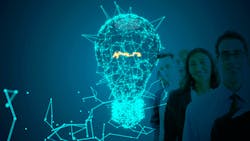READ MORE: Data is the Foundation for Digital Transformation
For Ron Norris at Georgia Pacific, the promise of artificial intelligence only can be realized with practical human intelligence at the start of the process.
“There was no instructional manual for digital transformation. We found that once you did one thing, you had to do something else,” said Norris, Georgia Pacific’s director of operations innovation at the ARC Advisory Group’s North American conference June 6-9 in Orlando. “AI was something we really needed to understand. What we wanted to add was take the knowledge of people who are leaving—the subject matter experts. It’s taking advantage of the knowledge of brightest and smartest people we had.”
Norris said the challenge of the digital transformation in manufacturing is that while data is available and better organized, that the management of all of that information requires a way to better identify which are the critical operational challenges.
“What I’m working on, is how do we really work with the connected worker,” said Norris. “Right now, we give the worker an iPad and on this iPad are 20 to 25 apps. If something goes wrong, the app gives an alert. If you work in a facility, there’s inherent noise. Things are going on everywhere, and now you have these 25 apps going off. How do you prioritize what to do first? That’s what I want AI to do—help our workforce. AI will also enhance our learning and development.”
Radek Rybicki, senior manager of global operations and data analytics for global food ingredients company Ingredion, told the ARC Forum that there are four key issues worth noting when embarking on an AI project:
- A good AI and machine learning project is one where you can directly measure the benefit in dollars.
- Data engineering and its architecture is very important, especially to get predictions into a control system securely.
- Once something is running, optimizing it can be a diminishing return vs. tackling another problem with a similar framework.
- Try to go after AI problems that can be scaled multiple times in your organization vs. unique opportunities.
The use of AI to understand and predict operational weaknesses comes at a time when process manufacturers such as Georgia Pacific are working first of optimize their existing manufacturing platforms. “The assets are what the assets are. If the assets are aging, we have to make a conscious effort to optimize performance, and that can be tricky sometimes,” said Norris. “In the past you’ve had process control, and it works great. With AI, we are able to predict a little closer when something is going to break.”
And in a time when remote work is becoming more the norm for office-bound workers, Norris said AI has allowed Georgia Pacific to redeploy its workers. “When we think about redefining the process models, we look at what roles there are in the facility. What has to be proximal to the facility? What roles can be away from the facility?” Norris said. “In the past, we had to have 40% of our employees as insurance, waiting on something to break. We’ve become a lot more reliably run.”
About the Author

Bob Vavra
Editor Emeritus, Machine Design and Power & Motion
Bob Vavra is the former senior content director of Machine Design and Power & Motion.
